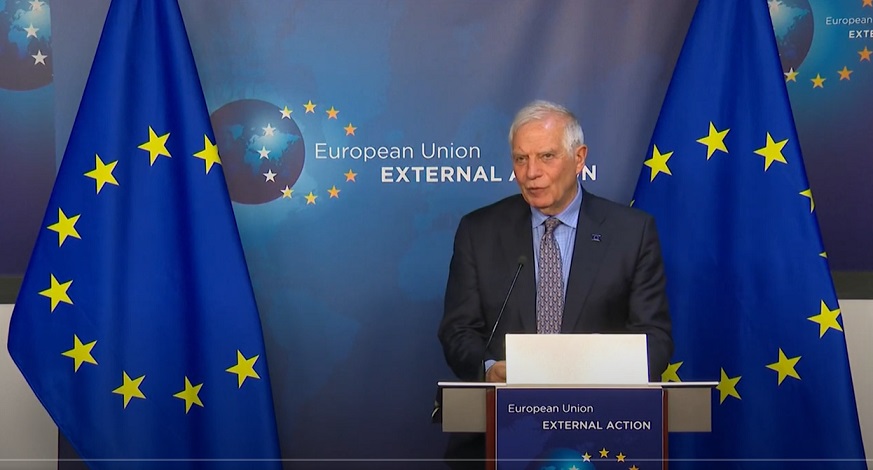 Dispatches
DispatchesLaw students from the European Union are reporting for JURIST on law-related events in and affecting the European Union and its member states. Ciara Dinneny is JURIST’s Chief European Correspondent and a trainee with the Law Society of Ireland. She files this dispatch from Dublin.
Serbian President Aleksandar Vucic and Kosovo Prime Minister Albin Kurti met with European Union foreign policy chief Josep Borrell last week to discuss an EU-facilitated proposal called the Agreement On The Path To Normalization Between Kosovo And Serbia. The two countries have had a tense relationship since the end of the Kosovo War in the late 1990s, which resulted in the separation of Kosovo from the former Yugoslavia.
Borrell said that the meeting was successful in that “no further discussions are needed on the European Union proposal” with both nations agreeing on the proposed text. Some key features of the Agreement include mutual recognition of passports, IDs and license plates which would allow citizens to pass freely between the two countries.
Additionally, as part of the agreement, Serbia cannot object to Kosovo’s membership in any international organisation. In December 2022, Kosovo formally applied for membership to the European Union. In accordance with the Agreement, Serbia cannot object to this membership nor to Kosovo joining other international organisations such as the United Nations. Nonetheless, five EU states – Spain, Greece, Romania, Slovakia and Cyprus – have refused to recognise Kosovo’s statehood and both China and Russia, permanent UN Security Council members, have also refused to recognise Kosovo as an independent nation. Therefore, there will still be significant barriers in place for Kosovo in joining these international organisations.
The Agreement has marked a significant step in mending the ties and ending political tension between the two nations. The tensions between them stem from a decade-long conflict which saw Kosovo declare formal independence in 2008. Serbia has never recognised Kosovo as a separate country and Kosovo does not want to give their Serbian nationals autonomy. As recently as December 2022, violence broke out in Kosovo’s ethnic Serbian north between minority Serbs and majority Kosovo Albanians.
While the two nations agreed to the text, the agreement itself has not been signed by either nation. Kosovo Prime Minister Kurti has stated that he was ready to formally sign the agreement but Serbia was not in a position to sign. Serbian President Vucic in an interview following the discussion has stated that “we did not agree, we talked, we will continue and there will be many more talks, nothing more than that.” Therefore, despite the contention that an agreement has been reached, it seems that there is a lot more that needs to be done before the Agreement is seen as a reality.
Article 11 of the Agreement states that both parties must follow Implementation Roadmap annexed to this Agreement. The implementation Roadmap still needs to be finalised by the parties. While both parties have expressed readiness to proceed to implementation, “further negotiations are still needed to determine specific implementation modalities for the provisions of the Agreement.” The discussion surrounding the implementation of the Agreement will be crucial if the Agreement is to be successful.
The parties will meet again in North Macedonia on March 18 to discuss negotiations further.

